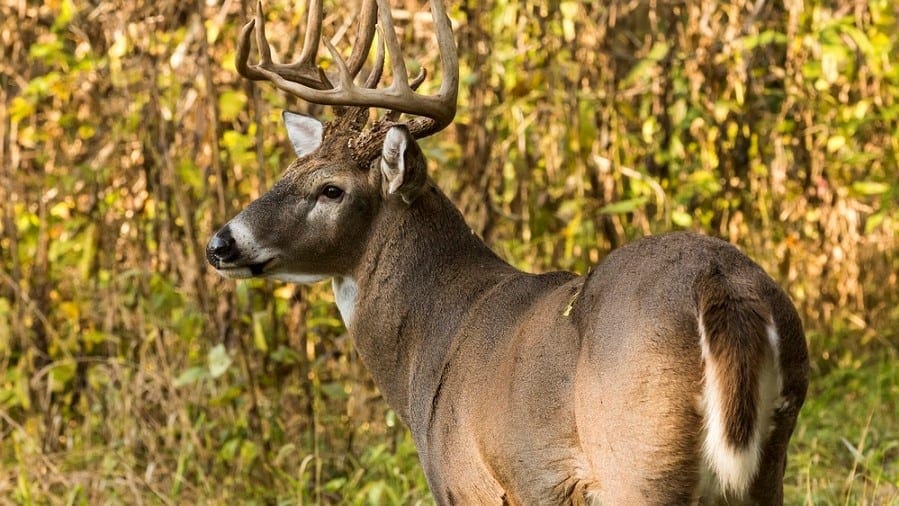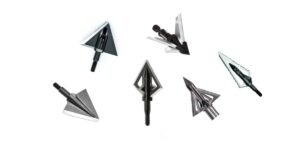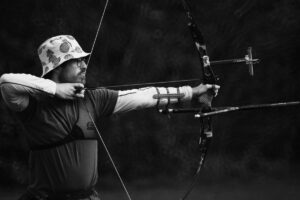Have you ever wondered how to find out where deer are bedding? We are going to answer that question for you! Understanding their preferred bedding areas can set up a game plan to hunt them more effectively.
Contents (Jump to Topic)
Toggleread.. Identifying Deer Droppings & Scat
How far do Deer Travel from their Bedding Area
According to Whitetail Habitat Solutions, “Bucks that show up within 1-2 hours of shooting hourse, are often just a 1/4 mile ro 1/2 mile away from their core, daytime bedding hours”.
They also explain, “How far a buck travels to reach your land and where he comes from reveals a lot about the level of hunting pressure that he will tolerate and the variety of Fall habitat that he requires.”
Source: https://www.whitetailhabitatsolutions.com/blog/mature-buck-travel-distance-unraveled
What time do Deer Bed Down in the Morning?
Usually, they move out of feeding areas and into bedding areas before full daylight.
That’s when they travel the farthest distances. In fall, deer movement peaks between 4 pm and 10 pm and 4:00 am to 8:00 am, according to Dr. Kent Kammermeyer and Dr. Larry Marchinton.
So it’s safe to assume that 4:00 – 8:00 am deer are most likely to bed down in the morning.
read.. Top Public Land Tactics for Whitetails
Where Do Deer Bed Down at Night?
Deer are looking for ample cover. Night-time bedding areas typically have thick cover to provide significant sensory protection. They will also seek out areas where they can see approaching predators and have something to their backs.
How do you Identify Buck Bedding on a Map?
Maps can be categorized into two categories, satellite maps and topographical maps. You should consider both types. Each has its advantages. However, the topographical map is the one you want to use.
On a topographical map, you can see ridges and contours of the land. Using these contour lines, you can estimate where bucks will possibly bed.
Again, look for places with ample cover. A buck needs to smell what’s behind it and see what’s in front of it.
How do you Hunt Deer Bedding Areas?
Generally speaking, setting up near deer bedding areas can be difficult. One effective way to hunt deer bedding areas is to find a spot with a crosswind.
This will ensure that the wind and thermals carry your scent away from the bedding area and travel route where deer enter and leave. Make sure you only hunt when the wind is in your favor.
Importance of Bedding Areas
Bedding areas are important to deer for various reasons, the most important being safety and security.
The presence of oval depressions in the grass, brush, or dirt indicates where a deer lay down. By understanding where deer bed down, hunters can better understand how to approach these animals and increase their chances of success.
Learning about deer movement patterns can help hunters pinpoint the best time to hunt certain areas.
Utilizing Topo Maps and Satellite Imagery for Deer Scouting

As the hunting season approaches, both public land hunters and private landowners are increasingly turning to topo maps and satellite imagery to scout for deer activity and bedding locations.
Topographic maps, or topo maps for short, provide valuable information on terrain features, helping hunters identify key areas such as hilly terrain, steep slopes, and logging roads.
Hunters can better understand deer movement patterns by analyzing topo lines and slope steepness and pinpointing potential deer funnels and travel corridors.
Identifying Buck Beds and Bedding Locations
One essential aspect of successful deer hunting is finding buck beds and bedding locations.
In recent years, there has been a growing interest in hunting buck beds, specifically mature buck bedding, as targeting these areas can lead to a trophy buck.
Deer bedding sites are usually found in areas with adequate covers, such as thicker vegetation or hilly terrain.
Using satellite imagery and topo maps, hunters can identify potential locations for deer beds and plan their access route accordingly.
Importance of Wind Direction and Escape Routes
Hunters should also consider wind direction when planning their hunting strategies. Wind currents and thermals can significantly impact scent control, making it essential for hunters to approach deer bedding sites and travel corridors from downwind.
Additionally, hunters should be aware of escape routes, ensuring they have a plan if a deer is spooked or encounters potential predators.
Scouting Trips and Habitat Management
Scouting trips are crucial for identifying deer signs, such as rub lines and scrape lines, which can indicate deer activity and help predict deer patterns during the pre-rut, rut, and post-rut periods.
Using game cameras, hunters can gather valuable information on the deer population and mature deer and even monitor specific target bucks throughout the season.
This information and harvest data can guide habitat management practices, such as food plots, forest management, and quality deer management for herd health, age structure, and buck-to-doe ratio.
Ethical Hunting and Skill Development
In addition to scouting and habitat management, hunters should also focus on ethical hunting by adhering to hunting regulations, bag limits, and antler restrictions.
Hunter education and hunt planning are essential for ensuring a successful hunting season and promoting conservation efforts and wildlife management.
Adapting Tactics and Preparing for the Season
As the archery season and deer gun season approach, hunters should continue to monitor deer movement patterns and pressure from other hunters.
Hunting tactics, such as spot and stalk, still hunting, or using tree stands and ground blinds, should be adapted to the specific type of terrain and hunting location.
By combining topo maps, satellite imagery, scouting, and proper hunting gear, hunters can significantly increase their chances of deer hunting success and create lasting hunting memories.
Embracing Modern Tools for a Sustainable Hunting Future
Topo maps, satellite imagery, and scouting and knowledge of terrain features are invaluable tools for hunters in identifying deer activity, bedding locations, and travel corridors.
By understanding deer movement patterns, wind direction, and habitat management practices, hunters can increase their chances of a successful hunting season and contribute to conservation efforts and habitat restoration.
As hunting traditions evolve, embracing these tools and strategies can help ensure a sustainable and ethical approach to deer management and hunting experiences.
Happy hunting!






